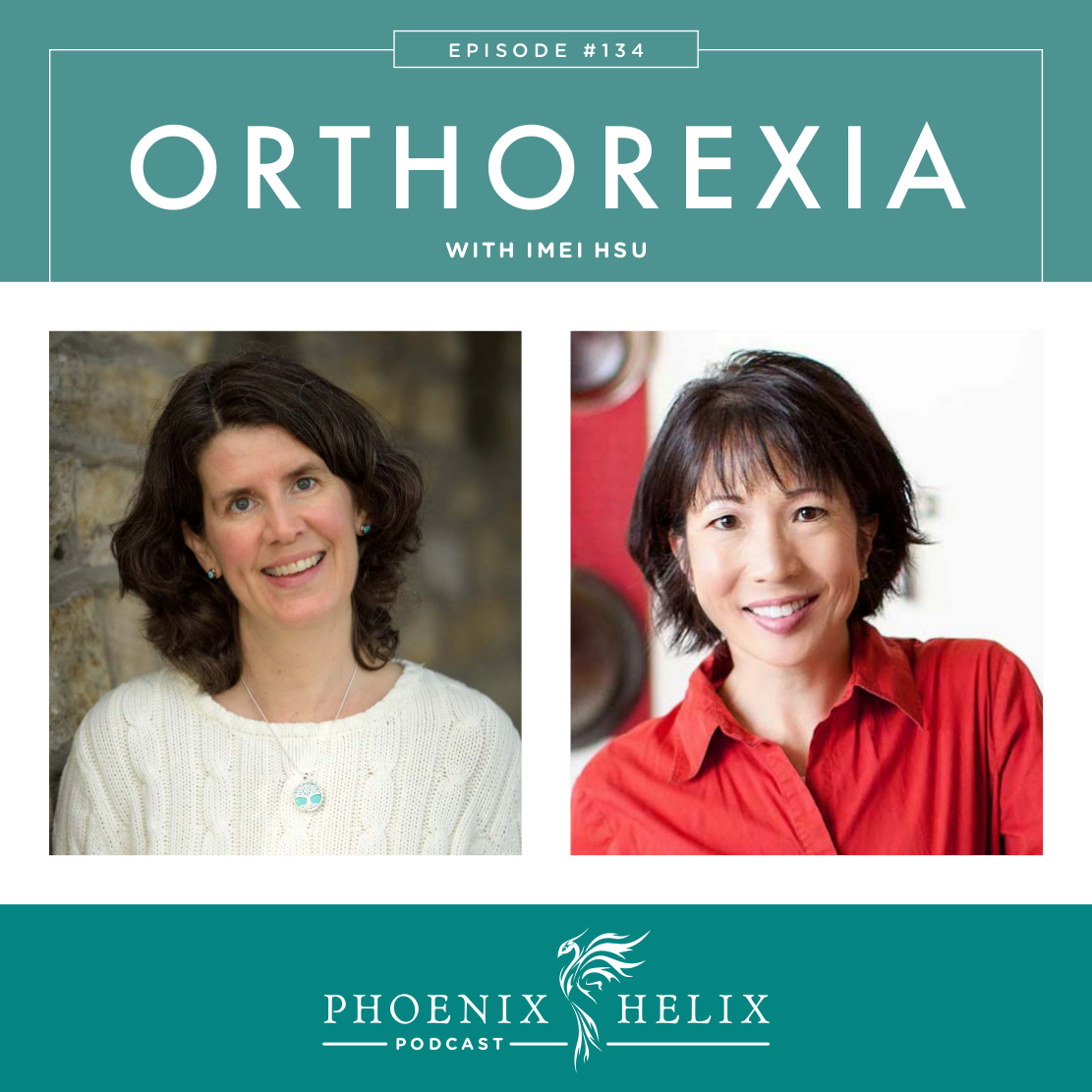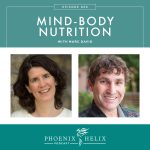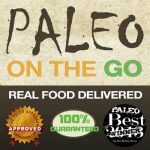
What’s the Line Between a Healing Diet and a Harmful One?
Orthorexia is a term that was first coined in the late 1990’s by Dr. Steven Bratman. It refers to an obsessive focus on healthy eating that becomes clinically impairing. This idea has become controversial in the paleo autoimmune community. Does a healing diet automatically set you up for orthorexia? What does it mean to eat in a way that supports your health? And what does it look like when this goal becomes unhealthy? My guest is Imei Hsu. She’s a registered nurse and clinical psychotherapist, and eating disorders are one of her specialties. She also has autoimmune disease herself as well as food allergies.
Listen to the Show
- Subscribe to my podcast through your favorite podcast app: iTunes, Stitcher, Google, TuneIn, Spotify, Amazon, etc.
- You can also listen to the episode right here through the player below, and if you subscribe to my newsletter you’ll get notified of future episodes.
Podcast: Play in new window | Download
Show Notes
- Intro (0:00)
- Blog Updates (1:51)
- My podcast airs every-other-week, and on the opposite weeks I write complementary articles on my blog. Here are some recent posts: 50 One-Pan Paleo AIP Recipes, Andrew’s Paleo AIP Reintroduction Experience, Gentle Detoxifying Baths, and 10 Nutrient-Dense Fruit & Veggie Scraps We Should Be Eating Instead of Throwing Away. If you don’t want to miss out, subscribe to my newsletter.
- Thank You to Our Podcast Sponsor: Simply AIP (3:14)
- Update 2023: Simply AIP is no longer in business, but you can find AIP products at Fully Healthy.
- Meet Imei (4:49)
- Imei Hsu is a registered nurse and clinical psychotherapist. As a child, she was frequently sick and people didn’t know why. It turned out she had multiple food allergies as well as celiac disease. She became interested in specializing in eating disorders as an adult, both to help people who truly suffer from eating disorders, but also to help those misdiagnosed when their health problems change their behavior around food. She now works in conjunction with many nutritionists, helping people with the psychology surrounding food as they also work to optimize nutrition for their health.
- Eating Disorders vs. Healing Diets (7:14)
- The classic eating disorder treatment philosophy sees all foods as equal and discourages any form of food restriction, no matter the reason.
- Healing diets, on the other hand, do indeed restrict food groups with the goal of reducing inflammation in the body. For this reason, sometimes people following a healing diet are misdiagnosed as having an eating disorder.
- That said, it is possible for these two spheres to overlap. That is the subject of our podcast today. How do we tell the difference?
- Defining Orthorexia Nervosa (10:35)
- “Ortho” means “right” – “rexia” means “hunger” – “nervosa” means fixation/obsession. So putting the words together, Orthorexia nervosa is the obsession with eating right or healthy foods.
- While often put into the category of eating disorders, it actually hasn’t been accepted as a formal diagnosis by any psychological/psychiatric association. It’s a proposed diagnosis that hasn’t been approved, largely because the criteria is too broad. Almost anyone making food choices to support their health could potentially be diagnosed with orthorexia. Anorexia nervosa and Bulimia nervosa, on the other hand, are formal diagnoses with very different criteria that apply to only a small percentage of people.
- Whereas other eating disorders are focused on weight, body image, and restricting food quantity, orthorexia nervosa is focused on food quality and purity. Many clinicians believe that there’s an obsessive-compulsive component to orthorexia.
- Orthorexia and the Paleo Autoimmune Protocol (AIP) (16:16)
- When you look at warning signs of orthorexia, a lot of them overlap with anyone following a special diet like the AIP. For example, people following the AIP do pay close attention to food groups and nutrition labels, and dietary restrictions can can impact social lives. The broadness of the criteria is one of the reasons it hasn’t been accepted as a formal diagnosis. However, there is a difference between following the AIP and orthorexia. Orthorexia is focused more on purity of the soul rather than autoimmune health. It carries a sense of superiority when the diet is done “right” and deep shame when it’s done “wrong”. While the AIP is a restricted diet, it also encourages nutrient-density and food reintroductions. With orthorexia, the person is looking for more and more reasons to limit rather than expand food choices.
- Not everyone following the AIP is orthorexic, but it is possible to follow the AIP in an orthorexic way. If you find yourself in this category, there’s no cause for shame. It’s simply a sign to seek help.
- What it looks like to follow the AIP in a health-promoting way: Understand the purpose of the AIP. It’s a diet designed to reduce inflammation and autoimmune symptoms and it has two phases: elimination and reintroduction. Learn why the food groups are eliminated, and also learn how to navigate the reintroduction process.
- Resources:
- Thank You to Our Podcast Sponsor – Paleo on the Go (28:18)
- A frozen meal delivery service, 100% of their menu is compliant with the elimination phase of the paleo autoimmune protocol (AIP). They have over 5o items, including entrees, side dishes, broth, AIP-friendly bacon, and desserts.
- Use the code PHOENIX for 10% off your first order.
- Navigating Food Fears (29:29)
- When we make the connection between food and autoimmune symptoms, there’s a sense of empowerment, but also vigilance. It’s natural to develop some fear surrounding food we haven’t prepared and also the reintroduction process. How do we navigate those fears in a healthy way?
- Having food fear doesn’t automatically make you orthorexic. Rather, it’s a normal response when you know a certain food causes autoimmune symptoms.
- There are two parts to overcoming the fear: (1) Knowing how to take care of yourself after a negative food exposure and experiencing your body’s resilience and ability to recover. (2) Making food fun again. Focus on the foods you can eat. Create environments where eating feels safe, fun, and relaxed. Surround yourself with people who support rather than criticize your dietary needs.
- Fear can sometimes prevent people from going through food reintroductions. But there are many reasons we shouldn’t stay in the elimination phase forever. Food reintros not only expand joy in the kitchen but also nutrition. Every food has a unique nutrient profile – the more variety of foods we eat, the more effectively we feed our bodies for health. If the process feels too scary to navigate alone, you can hire an AIP Certified Coach to support and guide you through the process.
- Resources:
- Food Shaming (37:53)
- It’s almost constant in our culture. People who aren’t on special diets often criticize and make fun of people who are. People who follow special diets often think everyone else should, too. Vegans and Paleo people alike often feel superior in their dietary choices and evangelize those choices to others. Where is the line between education and shame?
- Nutrition advice is constant changing, and there is no one universal diet that works for everyone.
- Adulting: every adult is responsible for their own choices. It isn’t our place to choose for them or judge those choices.
- Boundaries: can we see that we are separate people with the right to make separate choices?
- Only share dietary information if someone specifically expresses an interest and wants to learn more about the diet you follow.
- A helpful mantra we can all use: “eyes on our own plate”.
- Resources:
- Does the AIP Cause Orthorexia? (47:51)
- While it is possible for the AIP to trigger orthorexic behavior in an individual, it doesn’t happen to everyone.
- However, it’s important to know the warning signs and risk factors for orthorexia, which is why we’ve dedicated a podcast to it today.
- Some people who have developed orthorexic behavior on the AIP believe it’s a dangerous diet that no one should follow. This is a boundary issue – projecting a personal experience onto the community at large. It’s important not to dismiss someone’s negative experience and say it didn’t happen. But it’s also important not to dismiss the positive experiences that many people have on the AIP.
- Seeking Help for Orthorexia (49:53)
- If you feel like you might be experiencing orthorexic thinking or behavior, that’s not a personal failure – it’s a personal insight. There are people who can help.
- Imei Hsu works with people worldwide via telehealth. If you want to work with someone locally, the US National Eating Disorders website has a directory of qualified practitioners. You could also contact local therapists and ask if they have training in this area.
- Questions to ask: Some practitioners have an all or nothing approach, with the goal of eliminating any type of diet for health. Others have a more nuanced approach that can help you navigate the grey areas. Decide your goals on treatment and seek the therapist that’s right for you.
- Don’t Forget Lifestyle (52:31)
- The Paleo Autoimmune Protocol is about so much more than just food. It incorporates a wide variety of health practices, including sleep, stress management, and mindset, which is why so many of my podcasts are on non-food topics. See the Lifestyle page on my blog for a complete listing of articles and podcast episodes.
- Outro (53:32)
- Imei Hsu has two websites. She works 1:1 with clients through Imei Hsu Counseling. She also helps people rediscover how to make food fun again through My Allergy Advocate.
- Eileen (your podcast host) is the author of multiple books, written to help people thrive with autoimmune disease. Learn more on the Books Page.
- If you like this podcast, follow or subscribe through your favorite podcast app. You can also subscribe to Eileen’s biweekly newsletter.
- Check out the entire archive of podcast episodes.
You May Also Be Interested In
Spreading the Word
If you like the podcast, please leave a positive review in iTunes. It would mean the world to me, and also helps others find the podcast. Here are some quick instructions using your iPhone:
- If you are already subscribed to my podcast: (1) Click the purple podcast icon. (2) At the bottom of the screen, click Library. (3) At the top of the screen, click Shows. (4) Click the Phoenix Helix podcast image. (5) Scroll down the page, and you’ll see Ratings and Reviews. Scroll down a little bit more and click on Write a Review. This will bring up the review screen. Tap 5 stars (if you love the podcast), and then click in the title box, and it will bring up the keyboard. Enter a title and short review. (6) Click Send in the upper right corner. (7) Thank you! Positive reviews give the podcast a higher search ranking in iTunes, helping people find it and letting them know it’s a quality podcast and worth their time to listen.
- If you haven’t subscribed to my podcast: (1) Click the purple podcast icon. (2) In the lower right corner, click the magnifying class. (3) Type Phoenix Helix in the search box. (4) Click the podcast cover in the Show list. (5) If you’d like to subscribe, click the + sign at the top of the screen. (6) To write a review, scroll down the page, and you’ll see Ratings and Reviews. Scroll down a little bit more and click on Write a Review. This will bring up the review screen. Tap 5 stars (if you love the podcast), and then click in the title box, and it will bring up the keyboard. Enter a title and short review. (7) Click Send in the upper right corner. (8) Thank you! Positive reviews give the podcast a higher search ranking in iTunes, helping people find it and letting them know it’s a quality podcast and worth their time to listen.







